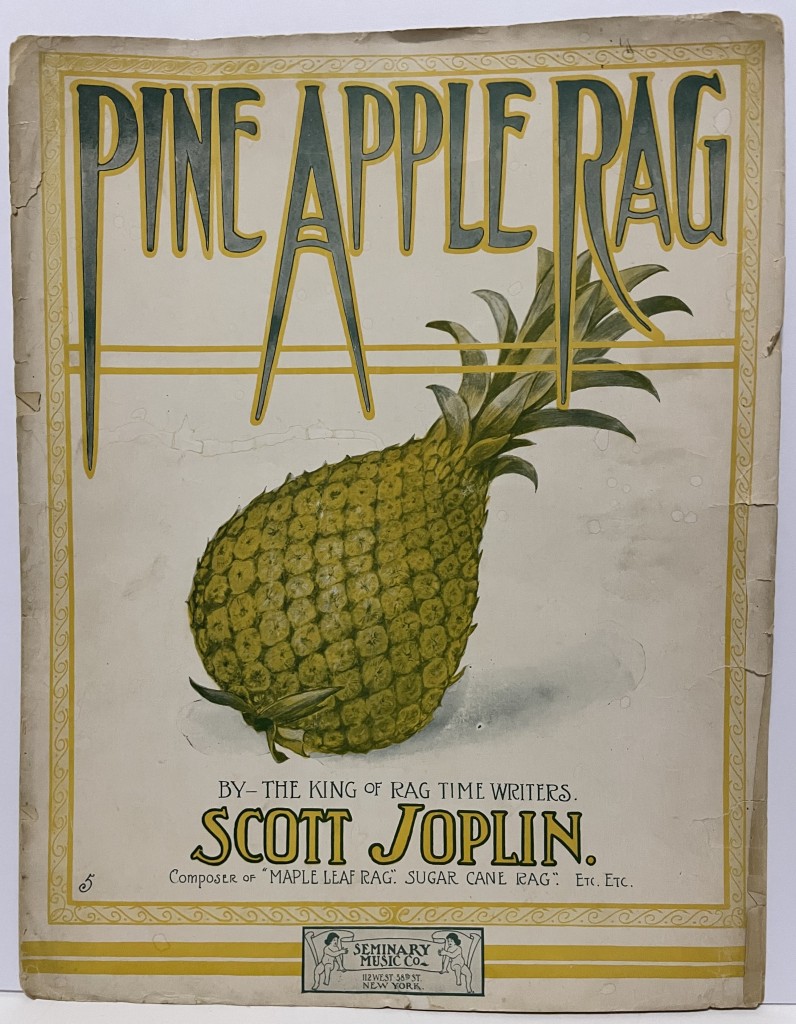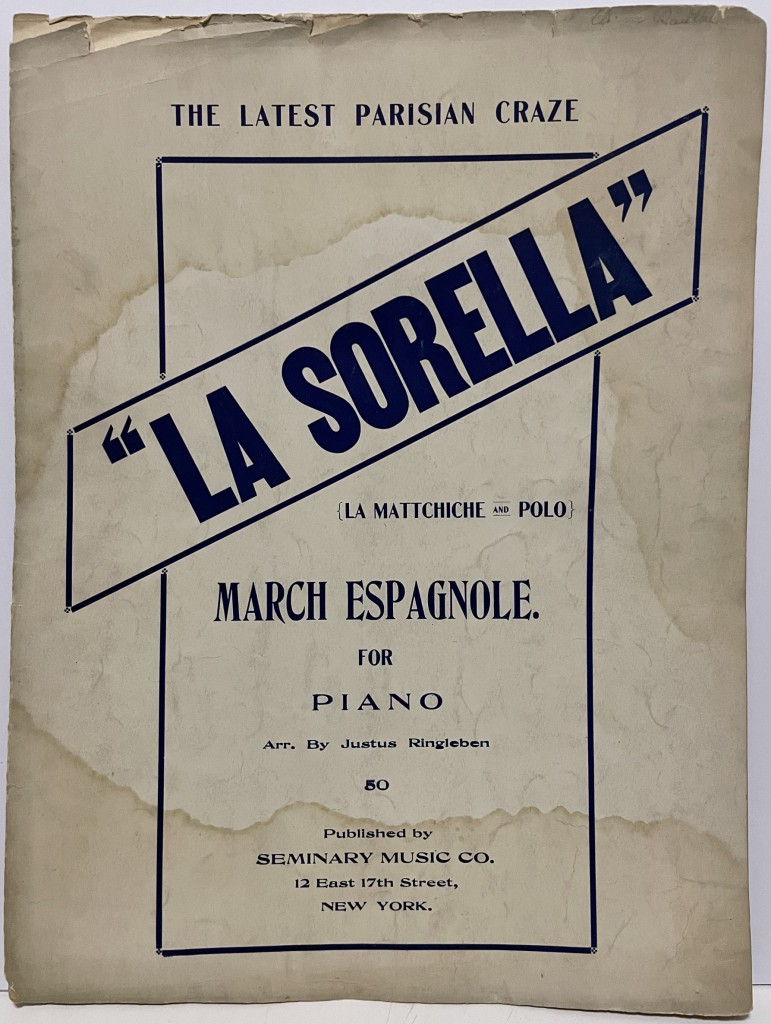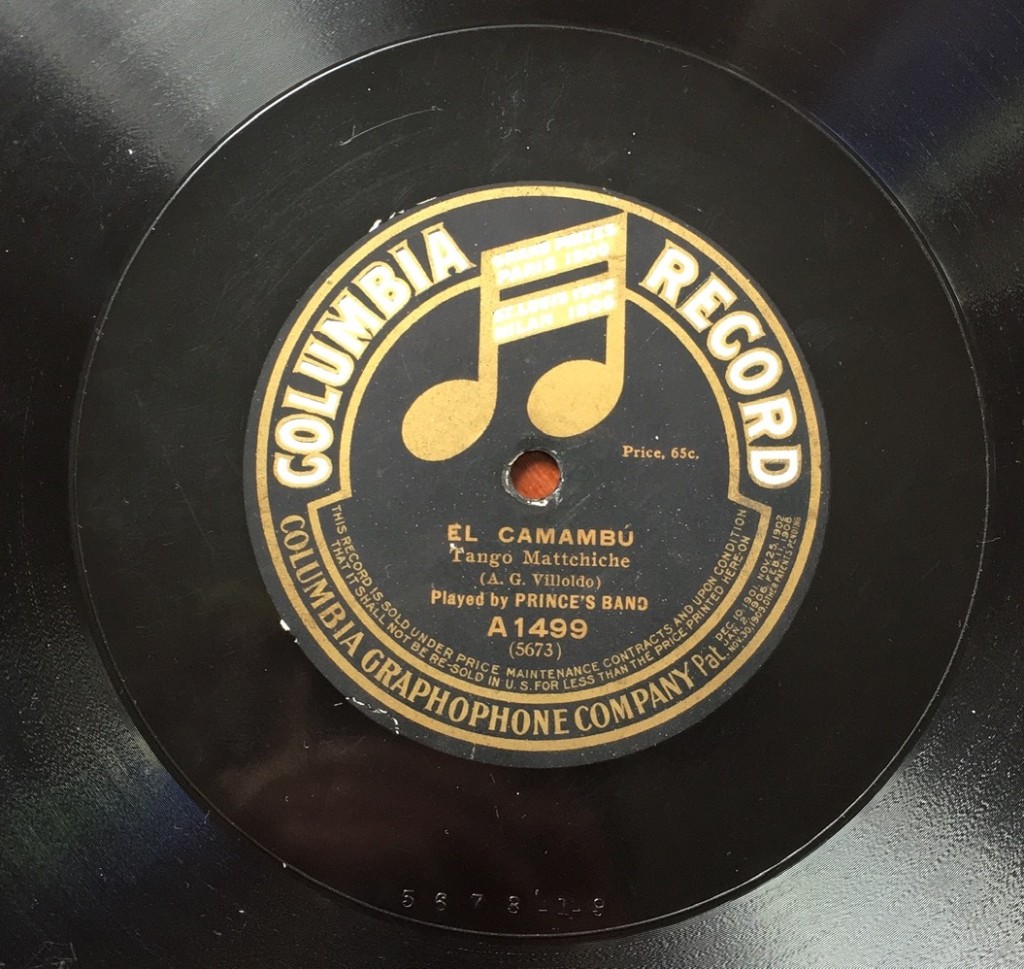
In 1908, a relatively small publishing firm named Seminary Music published a piece called “Pineapple Rag” by Scott Joplin. At this time, Joplin had freshly moved to New York City and decided to set up there. In the coming years they would publish some of Joplin’s most innovative works. This publishing company had prided itself by publishing the more artful and fringe of popular music of the time. A single writer for their firm would connect Seminary with the phonograph, and that was Justin Ring. While working for Seminary he proved that even the more unusual ideas in popular music could be successfully marketed. This firm later became the famous publishing firm of Irving Berlin, as he was another one of their writers on staff. The first few years of this firm’s existence is an unusually compelling yet still mysterious story.
It is difficult to pinpoint exactly when Seminary Music was founded, but their earliest copyrighted pieces date to the spring of 1906. Like many publishing firms that were just getting started, their earliest pieces were not copyrighted. This makes it extremely difficult to track these pieces, as they are not listed in copyright records. By the end of 1906, more of their publications show up in copyright records. At some point before the end of that year, Justin Ring embarked on a very curious series of arrangements, under the guise of Seminary. The inner workings of the firm remain a mystery, as to who exactly was running the operation, and who was employed by them.
While we know that in the mid 1910s South American dances became popular in the United States, there was a spike in interest in these songs around 1905, which was well documented by Columbia. In 1904, Columbia sent Charles Carson to Mexico and later South America to record some local bands and orchestras in their native lands. Although these records initially stayed in Columbia’s massive stock of masters for a few years, they started to be issued in 1906. These records were a massive success in the North American market, though they can often be difficult to find today.

After these were proving popular enough, their still relatively new music director Charles Prince jumped on this trend. Prince was originally from San Francisco, so he was somewhat versed in what was related closely to Mexican and South American music. He took this project to heart, and designated a series of recordings by his band and orchestra to be named as being by “Banda Española.” Sometimes the labels even mentioned a “Señor Prince” as the leader. At this time, Justin Ring was working in Prince’s band, as he was one of the most valuable arrangers in the field.
This is where Seminary comes in. Ring was, as it turns out, writing these arrangements of authentic South American dances for Seminary. These records, though performed by a North American band, are unusually faithful to the musical traditions and sounds of central and South America. Sometimes it is actually difficult to distinguish the Prince recordings from the authentic field recordings by Carson.
It is unclear how many of these pieces Ring arranged and or adapted, but at least two of them have been confirmed as being arranged by him,“la Mattichiche” and “Berta.” The others that Prince recorded between 1903 and 1909 cannot be easily tracked, as much like the other earliest Seminary pieces, they were not copyrighted. The only reason we know about these two aforementioned pieces is because a copy of “La Mattchiche” has surfaced.
These South American pieces would most certainly have filtered through the American city that had the most Latin American music the time, New Orleans. It seems likely that Seminary Music had connections to one of the publishers in New Orleans, hence these pieces. During his time at Seminary, Ring also published several ambitious concert pieces for piano, most of which are six pages and up. Most Tin Pan Alley publishers at the time would have refused such large pieces that weren’t folios of popular songs.
Seminary Music finally was able to afford colorful covers and advertisements by the end of 1906 and into 1907. Justin Ring’s “Sweet Potatoes” was published in November of 1906 with a vibrant, somewhat trippy cover. Right around that time, they also published a piece called “With Flying Colors” which was recorded on Edison not long after its copyright date. As long as Justin Ring worked for Seminary, they were connected closely with the major phonograph companies.
Many pieces that they published were recorded close to their publication. One of the most noteworthy pieces that Seminary published that was recorded was “Wall Street Rag.” That was in 1910 by the Zonophone Orchestra, then led by Eddie King. Though King was the leader, we can be assured that the reason this classic Joplin rag was recorded was because of Justin Ring (as he was still working for Zono at the time). This is a significant recording; only three of Joplin’s rags were recorded within his lifetime. Many of Justin Ring and Edgar Farran’s pieces, published by Seminary, were recorded as well, and around this time they wrote dozens of songs together.

1909 proved to be a very important year for Seminary, as this is when the most of Joplin’s works were published by them. They include “Pleasant moments,” “Paragon Rag,” “Country Club,” and “Euphonic Sounds.” It was also around this time that Joplin was deep into composing his opera Treemonisha. It wouldn’t be surprising if many of these lucky composers on staff at Seminary got to hear bits from Joplin’s magnum opus. It is actually rumored that young Irving Berlin, then working for Seminary, heard some of Joplin’s drafts for Treemonisha, and used the titular melody of “A Real Slow Drag” for “Alexander’s Ragtime Band.” It is still debated today, but the connection is very likely considering the circumstances.
After the handful of pieces Joplin handed to Seminary, he left them to spend most of his time on Treemonisha. It was around the end of 1910 that the firm started becoming much less significant. The variety of pieces and composers they published had always been limited, and at this point it was even more so. By the end of 1912, Justin Ring and Ed Farran had left them, as had one of their first writers, Edwin Kendall. Ted Snyder and Irving Berlin took over the firm in 1913, then leaving Seminary as a distant memory.
While it did not last long, Seminary Music brought together many of the most creative minds along Tin Pan Alley during a crucial transitional era in American music. It started with bolstering a trend that would take the world by storm in the coming years, and preserved the musical ideas of who would be considered one of the greatest musical geniuses of the 20th century, Scott Joplin. They achieved unusual success in the then very competitive ragtime world, and were able to seamlessly connect with phonograph companies in the process, producing a few important recordings along the way.






















